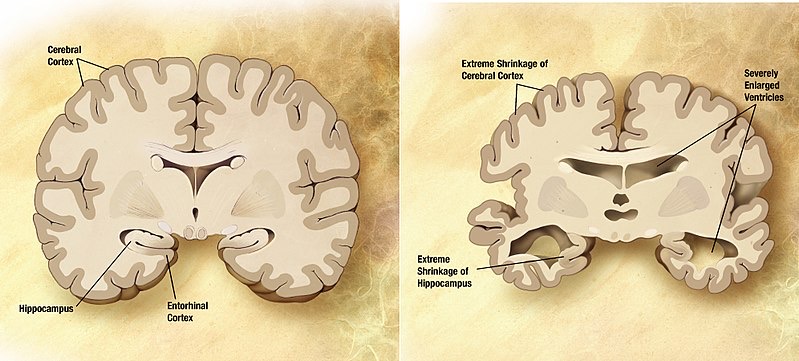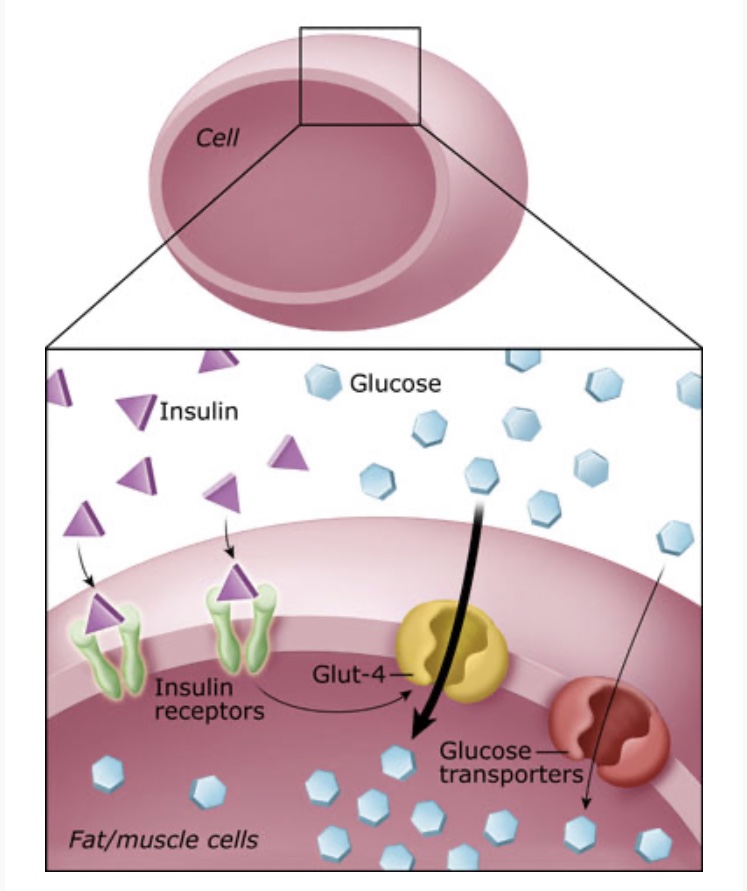Let me start with this bold statement: Alzheimer’s disease can be prevented, and in many cases its associated decline can be reversed.
Like most of the terrible chronic diseases of our modern-day society, we have a chance to modify, and sometimes even prevent, the morbid ending that our genetics may have in store for us…but we need to start with lifestyle changes now. I personally have seen the effects of Alzheimer’s disease (AD) in my grandmother. I don’t think she was ever diagnosed with anything other than senile dementia, but she had all the classic findings of AD. At one point in her decline, I was going to visit her at the nursing home she had to live in and my dad stopped me. He explained that she would not remember me and that I would just scare her if I showed up at the door to her room (if you don’t know me I’m part Canadian grizzly bear :-)), and that she would probably scream for help when she saw me! He told me to just remember her the way she was before she got sick and let her die alone in peace. This isn’t the way most of us want to leave this world, alone and not remembering our family. As a result of this experience, AD has always been a scary thing to me. What if I meet the same fate as my poor grandmother, slowly losing my mind until my grandkids can’t even visit me out of fear? Fortunately, there is some powerful research from Dale Bredesen MD, and his colleagues, that suggest that we can change the fate that our genes might have in store for us. First let’s discuss what AD is and who is prone to get it.
What is Alzheimer’s Disease?

Alzheimer’s disease (AD) is a chronic, neurodegenerative disease that usually starts slowly and gradually worsens over time. One of the main causes is a substance called amyloid. Amyloid is a protein fragment that sticks to the brain and destroys the neural synapses (which transmit brain signals) leading to the cognitive decline in Alzheimer’s disease. The most common early symptom is difficulty in remembering events. As the disease advances, symptoms can include problems with language, disorientation, mood swings, loss of motivation, not managing self-care and behavioral issues. Gradually, bodily functions are lost, ultimately leading to death. Alzheimer’s disease will strike 1 in 9 Americans 65 and older. Globally, a projected 160 million people will have Alzheimer’s disease by 2050.
Genetic Risk Factors
ApoE4 is a gene variant and is the strongest known genetic risk factor for Alzheimer’s disease. 75 million Americans carry the ApoE4 gene. In people who carry 2 copies of this gene (1 from each parent), symptoms of AD often begin in the late 40’s or 50’s. For people who carry 1 copy of the gene, symptoms typically begin in the late 50’s or 60’s and for people with no copies of the ApoE4 gene, symptom onset is typically in the 60’s or 70’s. You can figure out if you have the ApoE4 gene by doing a DNA test. A simple DNA test can be done by a company like 23andMe. Despite your genetic predilection for AD, you can decrease your risk factors if you understand what is causing the build-up of amyloid in the brain. Would you be surprised if I gave you a spoiler alert and told you that a major cause of amyloid build-up in the brain is caused by the food that you eat?
IDE & Amyloid

When you eat, you add sugar to your blood and insulin is released to shuttle the blood sugar into your cells to be used as energy. Your body then has to get rid of the insulin that is floating around in your blood. IDE (insulin degrading enzyme) is released to break down the insulin in your body to prevent blood glucose from dropping too low. IDE also degrades amyloid, the protein fragment in the synapse-destroying plaques in Alzheimer’s disease. But IDE can’t do both at once, so chronically high levels of insulin prevent IDE from destroying amyloid, which over a period of 4-5 decades, increases the risk for Alzheimer’s disease. Therefore, a critical part of a solution for AD is reducing insulin resistance, restoring insulin sensitivity, and reducing glucose levels, thereby restoring optimal metabolism.
Sugar is Not Your Friend!
The human body is not designed to process more than about 15 grams of sugar per day. A typical soft drink has 40-100 grams of sugar. When you eat foods with a high glycemic index (white bread, white rice, white potatoes, baked goods), your body releases large amounts of insulin in an attempt to keep glucose levels in check. Over time, the cells become less responsive to insulin which contributes to metabolic syndrome, fatty liver and type 2 diabetes, but also Alzheimer’s disease.
Testing for AD
Currently, the gold standard test for diagnosing AD is a specific type of brain MRI, usually ordered by a neurologist. Unfortunately, once your brain starts to show signs of degradation significant enough to show up on a brain MRI, you’re already in pretty deep trouble. Early signs and recognition of the cognitive decline associated with AD are necessary so that we can recommend changes before the disease takes hold and causes irreversible brain degradation.
There is a quick assessment called the Montreal Cognitive Assessment Test. This test takes about 10 minutes to administer and if you score 25/30 or less, you might be experiencing the cognitive decline associated with AD.
Anyone over 45 that has risk factors for Alzheimer’s disease (like a positive result for ApoE4 on a DNA test) should do blood testing that includes:
How Do I Prevent AD?
Thankfully, there is a relatively large window of opportunity not only to prevent, but also to reverse AD. The earlier the causes of synapse loss and cognitive decline are identified and corrected, of course, the better your chance of avoiding full-blown AD. In Part 2 of this article, I will go over the lifestyle plan you need to adopt to give yourself the best chance of never becoming a victim of this awful disease.
References:
Bredesen, Dale E. The End of Alzheimer’s. The First Program to Prevent and Reverse Cognitive Decline. 2017.


